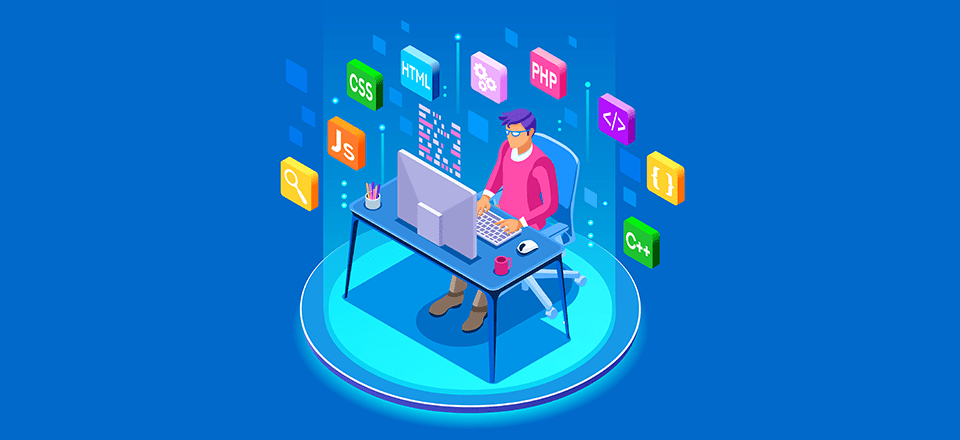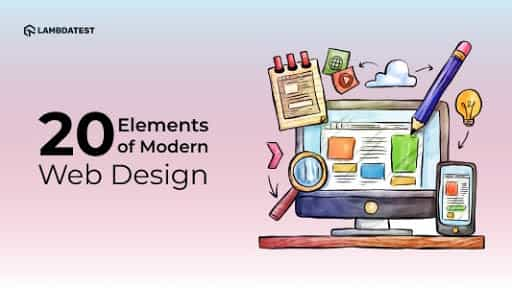All Categories
Featured
Table of Contents
- – Custom Website Design And Marketing - Inmotion...
- – Web Design Services + Website Development Age...
- – Responsive Web Design - A List Apart Tips and...
- – Top 30 Web Design Companies - Apr 2022 - Desi...
- – Web Design - Uci Division Of Continuing Educa...
- – Responsive Web Design - A List Apart Tips and...
- – Web Design And Engineering Major - Santa Cla...
- – Collaborate & Create Amazing Graphic Design ...
- – Top Web Design Agencies Ranked - 2022 Review...
- – Ciw Web Design Series Tips and Tricks:
- – Awwwards - Website Awards - Best Web Design ...
Custom Website Design And Marketing - Inmotion Hosting Tips and Tricks:
Quick summary Use and the utility, not the visual style, determine the success or failure of a website. Considering that the visitor of the page is the only person who clicks the mouse and therefore chooses everything, user-centric design has developed as a basic approach for effective and profit-oriented website design - web design frederick md.
and the utility, not the visual design, identify the success or failure of a site. Because the visitor of the page is the only person who clicks the mouse and for that reason chooses whatever, user-centric style has actually become a basic technique for effective and profit-oriented web design. If users can't use a function, it may as well not exist.
g. where the search box must be placed) as it has actually already been done in a number of short articles; rather we concentrate on the approaches which, utilized properly, can lead to more advanced design decisions and streamline the process of perceiving provided info. Please notice that you might be interested in the usability-related articles we have actually published before: Principles Of Great Website Design And Reliable Web Style Standards, In order to use the concepts correctly we first need to comprehend how users engage with websites, how they think and what are the basic patterns of users' behavior.
Web Design Services + Website Development Agency Tips and Tricks:
Visitors glimpse at each new page, scan some of the text, and click on the very first link that captures their interest or slightly resembles the thing they're trying to find. There are big parts of the page they don't even look at. A lot of users search for something intriguing (or helpful) and clickable; as soon as some appealing candidates are found, users click.
If a page offers users with top quality content, they want to compromise the content with advertisements and the design of the site. This is the factor why not-that-well-designed sites with top quality content gain a lot of traffic over years. Material is more vital than the design which supports it.

Extremely basic principle: If a site isn't able to meet users' expectations, then designer stopped working to get his job done effectively and the company loses money. The higher is the cognitive load and the less user-friendly is the navigation, the more ready are users to leave the site and search for options.
Responsive Web Design - A List Apart Tips and Tricks:
Neither do they scan web page in a direct style, going sequentially from one website area to another one. Instead users satisfice; they choose the first reasonable choice. As quickly as they find a link that appears like it might cause the objective, there is a great chance that it will be instantly clicked.
It does not matter to us if we comprehend how things work, as long as we can use them. If your audience is going to imitate you're designing billboard, then design excellent signboards." Users wish to be able to control their internet browser and rely on the constant information discussion throughout the website.
If the navigation and website architecture aren't intuitive, the number of enigma grows and makes it harder for users to comprehend how the system works and how to get from point A to point B. A clear structure, moderate visual ideas and easily identifiable links can help users to discover their course to their goal.
Top 30 Web Design Companies - Apr 2022 - Designrush Tips and Tricks:

Given that users tend to explore sites according to the "F"-pattern, these three declarations would be the first aspects users will see on the page once it is filled. The style itself is easy and intuitive, to comprehend what the page is about the user requires to search for the answer.
As soon as you've attained this, you can communicate why the system is useful and how users can take advantage of it. People will not utilize your web website if they can't discover their method around it. 2. Do Not Misuse Users' Persistence, In every project when you are going to provide your visitors some service or tool, attempt to keep your user requirements very little.
First-time visitors are willing to, not filling long web types for an account they might never use in the future. Let users explore the site and find your services without requiring them into sharing private information. It's not affordable to force users to enter an email address to test the function.
Web Design - Uci Division Of Continuing Education Tips and Tricks:
And that's what you want your users to feel on your web site. The registration can be done in less than 30 seconds as the kind has horizontal orientation, the user doesn't even require to scroll the page.
A user registration alone is enough of an obstacle to user navigation to cut down on incoming traffic. Handle To Focus Users' Attention, As sites provide both fixed and vibrant material, some aspects of the user interface attract attention more than others do.
Focusing users' attention to particular locations of the website with a moderate usage of visual components can assist your visitors to obtain from point A to point B without thinking of how it actually is expected to be done. The less question marks visitors have, the they have and the more trust they can establish towards the company the site represents.
Responsive Web Design - A List Apart Tips and Tricks:
Strive For Feature Exposure, Modern web styles are usually slammed due to their method of assisting users with aesthetically appealing 1-2-3-done-steps, big buttons with visual impacts etc. From the design viewpoint these elements actually aren't a bad thing.
The site has 9 main navigation alternatives which are noticeable at the first glance. What matters is that the content is well-understood and visitors feel comfy with the way they connect with the system.
Rather a cost: just what visitors are looking for. An optimum option for reliable writing is touse brief and concise expressions (come to the point as rapidly as possible), use scannable layout (classify the material, utilize numerous heading levels, utilize visual components and bulleted lists which break the flow of uniform text blocks), use plain and unbiased language (a promotion doesn't need to sound like advertisement; give your users some affordable and unbiased reason why they must use your service or stay on your website)6.
Web Design And Engineering Major - Santa Clara University Tips and Tricks:
Users are seldom on a site to delight in the design; moreover, in many cases they are trying to find the information in spite of the design - web design frederick md. Pursue simpleness rather of complexity. From the visitors' perspective, the best site style is a pure text, without any ads or more content obstructs matching exactly the inquiry visitors utilized or the content they have actually been trying to find.
Finch plainly provides the info about the website and offers visitors a choice of options without overcrowding them with unnecessary material. Not only does it help to for the visitors, however it makes it possible to perceive the information provided on the screen.
Complex structures are harder to check out, scan, evaluate and deal with. If you have the choice between separating 2 design sections by a noticeable line or by some whitespace, it's generally much better to use the whitespace service. (Simon's Law): the better you handle to provide users with a sense of visual hierarchy, the easier your material will be to view.
Collaborate & Create Amazing Graphic Design For Free Tips and Tricks:
The exact same conventions and rules need to be used to all elements.: do the most with the least amount of cues and visual elements. Four major indicate be considered: simplicity, clarity, diversity, and emphasis. Simpleness includes only the components that are essential for interaction. Clearness: all components must be created so their significance is not uncertain.
Conventions Are Our Good friends, Conventional design of site elements does not lead to a boring website. In reality, as they reduce the discovering curve, the requirement to find out how things work. It would be an usability problem if all websites had different visual presentation of RSS-feeds. That's not that various from our routine life where we tend to get used to standard principles of how we organize data (folders) or do shopping (positioning of products).
comprehend what they're anticipating from a site navigation, text structure, search positioning etc. A typical example from use sessions is to equate the page in Japanese (assuming your web users do not know Japanese, e. g. with Babelfish) and supply your usability testers with a task to discover something in the page of various language.
Top Web Design Agencies Ranked - 2022 Reviews - Clutch.co Tips and Tricks:
Steve Krug suggests that it's better to, but benefit from conventions when you do not. 10. Test Early, Test Frequently, This so-called TETO-principle must be applied to every web style project as use tests frequently supply into significant problems and problems connected to a provided design. Test not too late, not insufficient and not for the wrong factors.
Some important points to bear in mind: according to Steve Krug, and testing one user early in the task is much better than screening 50 near completion. Accoring to Boehm's first law, mistakes are most frequent throughout requirements and design activities and are the more pricey the later they are removed.
That means that you design something, test it, fix it and after that check it again. There may be problems which haven't been found during the preliminary as users were almost blocked by other problems. use tests. Either you'll be indicated the issues you have or you'll be indicated the lack of major design flaws which is in both cases an useful insight for your job.
Ciw Web Design Series Tips and Tricks:

This holds for designers too. After you have actually worked on a website for few weeks, you can't observe it from a fresh point of view any longer. You understand how it is constructed and for that reason you know exactly how it works you have the knowledge independent testers and visitors of your website would not have.
It can be linked to other areas such as graphic design, user experience, and multimedia arts, however is more appropriately seen from a technological standpoint. It has actually ended up being a large part of people's daily lives. It is difficult to envision the Internet without animated graphics, various designs of typography, background, videos and music.

Throughout 1991 to 1993 the Internet was born. Text-only pages could be seen using a basic line-mode web browser. In 1993 Marc Andreessen and Eric Bina, developed the Mosaic web browser. At the time there were numerous internet browsers, nevertheless most of them were Unix-based and naturally text heavy. There had actually been no integrated approach to graphic design aspects such as images or noises.
Awwwards - Website Awards - Best Web Design Trends Tips and Tricks:
The W3C was produced in October 1994 to "lead the World Wide Web to its complete potential by developing common procedures that promote its evolution and ensure its interoperability." This dissuaded any one business from monopolizing a propriety browser and shows language, which could have altered the impact of the World Wide Web as a whole.
As this has taken place the innovation of the web has actually also moved on. There have also been substantial changes in the way people use and access the web, and this has actually changed how sites are designed.
Learn more about Lovell Media Group LLC or TrainACETable of Contents
- – Custom Website Design And Marketing - Inmotion...
- – Web Design Services + Website Development Age...
- – Responsive Web Design - A List Apart Tips and...
- – Top 30 Web Design Companies - Apr 2022 - Desi...
- – Web Design - Uci Division Of Continuing Educa...
- – Responsive Web Design - A List Apart Tips and...
- – Web Design And Engineering Major - Santa Cla...
- – Collaborate & Create Amazing Graphic Design ...
- – Top Web Design Agencies Ranked - 2022 Review...
- – Ciw Web Design Series Tips and Tricks:
- – Awwwards - Website Awards - Best Web Design ...
Latest Posts
Siteinspire - Web Design Inspiration Tips and Tricks:
Html Responsive Web Design - W3schools Tips and Tricks:
What Is Web Design? - Interaction Design Foundation (Ixdf) Tips and Tricks:
More
Latest Posts
Siteinspire - Web Design Inspiration Tips and Tricks:
Html Responsive Web Design - W3schools Tips and Tricks:
What Is Web Design? - Interaction Design Foundation (Ixdf) Tips and Tricks: